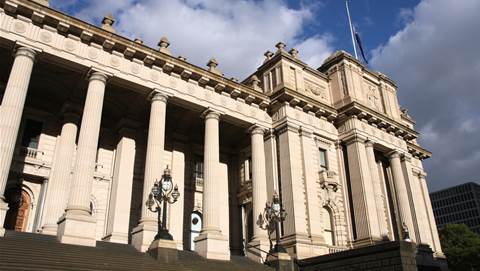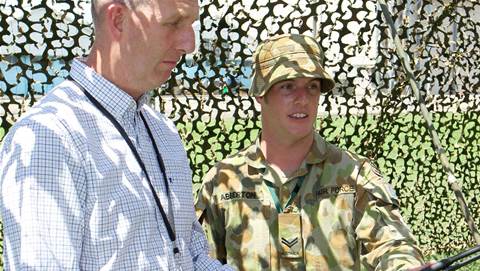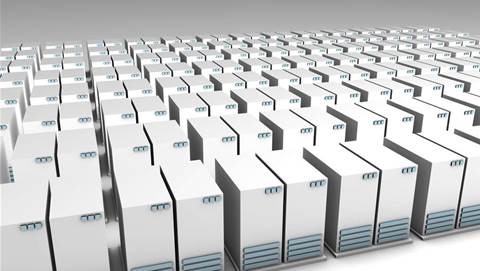The bank, on a mission since 2007 to become carbon neutral by September 2010, will attempt to generate 50 per cent of the power it requires for its data centre using cogeneration and trigeneration techniques.

Cogeneration (or 'cogen') refers to methods by which some of the power demanded by the data centre can be generated within the centre itself. In NAB's case, it will involve the burning of gas in a turbine, the energy of which is converted into electricity to power its computing equipment.
Trigeneration (or 'trigen') involves taking the exhaust energy (300 degree heat) out of the gas turbine and funnelling it into an absorption chiller to generate further power.
While trigen in particular is radical for your average data centre, NAB data centre specialist Glenn Allen likens it to simpler technologies readers may recall from camping trips in their youth.
"It's the same idea as how the gas bottle in your mum and dad's old caravan also ran the fridge," he told iTnews, in the lead up to a presentation he is preparing for the 2009 Data Centre Summit. "You take something hot in a liquid state that once turned into a gaseous state becomes cold."
NAB has a business case prepared to kick off trigen in its Victorian data centre within six months. But Allen is realistic about how soon it will be before the bank is pulling back from its reliance on the local electricity grid.
He guesses that within a relatively short time frame, the bank will reduce its reliance on the grid by at least 30 per cent - with more to come as trigen techniques are refined further.
"Our intention is not to bet the farm on day one," he said. "There is a danger - if you drop off the grid altogether, then you suddenly need to turn back to it again, you could reset the local grid overnight. You could snap circuit breakers right through the system."
Free cooling
Allen is also investigating the possibility of using 'free cooling' to reduce the power consumption of NAB's data centre further.
It is estimated that most organisations use as much carbon on the cooling of the data centre as the running of the machines within it. 'Free Cooling' refers to the use of the cooler outside air surrounding the data centre to cool the hot machines inside.
Like trigen, free cooling is a relatively new technique. While recent tests conducted in the USA found the process is to be safe, concerns persist around the potential for contaminants in the outside air to cause problems for machines inside the facility.
Allen has closely monitored trials by Intel - which chose to split one of its data centres in half, opening up half to outside air to test whether this equipment would become any less reliable than the equipment maintained in a 'sterile' environment. He has also tracked experiments by technicians running a half dozen servers in their greenhouse.
Twelve months into these experiments, none have found any difference in downtime using outside air.
But Allen is cautious about declaring the process safe just yet.
"When you consider that you need at least four or five years out of a server, all this short term testing doesn't do the job of saying whether contaminants are an issue or not," he said. "We need more data.
"The problem in the long term might be dirt and dust clogging up heat sinks, insulating the machine. You're not going to get enough data emerge in a six month or twelve month test to rule that out."
Allen has no doubts that 'free cooling' "will be the biggest thing in the next five years." But at present, he is turning his attention to a variation on free cooling - to what is termed 'Kyoto Cooling'.
Another relatively new technique, Kyoto Cooling involves the use of a 'rotary exchange wheel' - half of which is exposed in the interior and the other half to the exterior of a building - that carries hot air from inside the data centre into the outside air, without letting any contaminants in.
"It's a sealed version of free cooling," Allen says. "It will give us the best of both worlds. It takes the idea of free cooling and puts it in more palatable terms."
While no implementation plans are in place just yet, Allen says he expects to be making some sort of action with regards to free cooling within the next 18 months to two years.
"Free cooling is quite a reasonable option in Victoria," he said. "We estimate the realistic window for turning the air conditioning off would be something like 65 per cent of the time."
Read on to page two for NAB's disappointment with virtualisation technologies
Other efforts
Allen says the data centre is in effect the final place NAB has looked to cut down on its carbon footprint.
The bank has already transferred its vehicle fleet to hybrid energy cars, mandated standard building requirements to include energy efficiency, and now insists on turning office lights off at 7pm, with exceptions of no longer than thirty minutes.
IT was "the sleeping dragon in the carbon footprint issue," Allen said.
"No one cared about energy use in technology areas before this," he said. "It has been a real turnaround."
When the IT operations staff were first asked to produce a number for how much power its data centre uses, auditors "asked if we'd left an extra zero in there."
"We looked at it and said, no, that's actually what we're using," Allen says. "That put us under some pressure to look at this."
The challenge, Allen says, is that Green IT is "so nebulus". Most IT operations haven't accounted for their use of power in the past nor have they had any metrics to compare it to.
"The more you measure, the more you realise IT is distributed throughout the organisation - right down to sitting there on the belt of your end users [their Blackberry]," Allen says.
"Before I could look at data centres, I was looking at sleep states on PCs."
Making changes at the end user level and at the level of the data centre are "two very different things", Allen said.
"It's like turning an ant around compared to turning around the Titanic. The data centre is a long-term journey."
Stage one of the data centre journey saw NAB invest in virtualisation technology to consolidate its servers.
Allen is somewhat disappointed with the results.
"There is a lot of myth around virtualisation and its capacity to reduce your carbon footprint," he said. "The reality is, it's very hard work. It's not as easy as the VMware brochure makes it look."
Allen thinks it's likely to be smaller businesses with "flat architectures" (less operating systems) that are in the "sweet spot" for virtualisation. He highly doubts that any enterprise data centres are achieving the purported server consolidation ratios of 15:1 or 20:1 when they invest in virtualisation.
"In the bowels of the industry, you might be lucky to get 50 per cent capacity out of a server that previously had ten to fifteen per cent capacity in use. And processors might be able to run at 80 per cent capacity, but then you can run into bandwidth issues. SANs slow down and there is too much data through too few ports."
Allen also doubts the capacity of virtual desktops to reduce carbon use - conscious that pulling heat loads off the desktop only pulls it back into the data centre.
NAB is now "resetting our expectations of virtualisation to a lower mark."
Allen will be presenting an in-depth look at NAB's journey to become carbon neutral at the 2009 Data Centre Summit in June.



.png&h=140&w=231&c=1&s=0)


_(20).jpg&h=140&w=231&c=1&s=0)





 iTnews Executive Retreat - Security Leaders Edition
iTnews Executive Retreat - Security Leaders Edition












_(1).jpg&h=140&w=231&c=1&s=0)
